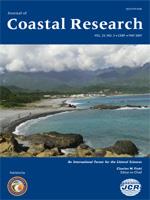Anthropogenic alteration is a persistent and growing problem in coastal marine ecosystems. Changes may have occurred and gone undetected in coastal systems, and analysis of the molluscan death assemblage provides a useful tool for detecting changes where long-term observational monitoring of living organisms has not been conducted.
During the early 1980s, a series of experiments were conducted along Cross Bank, Florida Bay (inside Everglades National Park) to assess the effects of nutrient pollution by seabirds roosting on implanted marker posts on underlying sea grass beds. Over time, Halodule wrightii replaced Thalassia testudinum as the dominant sea grass at these altered sites. The present study focuses on the effects of this nutrient pollution on the molluscan death assemblage. Two parallel transects were established, one using altered sites as sampling stations and the other using unaltered, Thalassia-dominated localities. A series of surficial push cores were collected along these transects (24 in all) to compare compositionally the assemblages on both transects. Results demonstrate detectable differences in the composition of molluscan death assemblages between altered and unaltered sites. Several molluscs were virtually excluded by the change in sea grass composition, and results suggest that differences in root and blade morphology of the two sea grass species are causal factors. Therefore, the results demonstrate that molluscan death assemblages effectively recorded environmental change through some two decades in the study area and that similar environmental changes may be diagnosed elsewhere in coastal ecosystems on the basis of assemblage composition.





